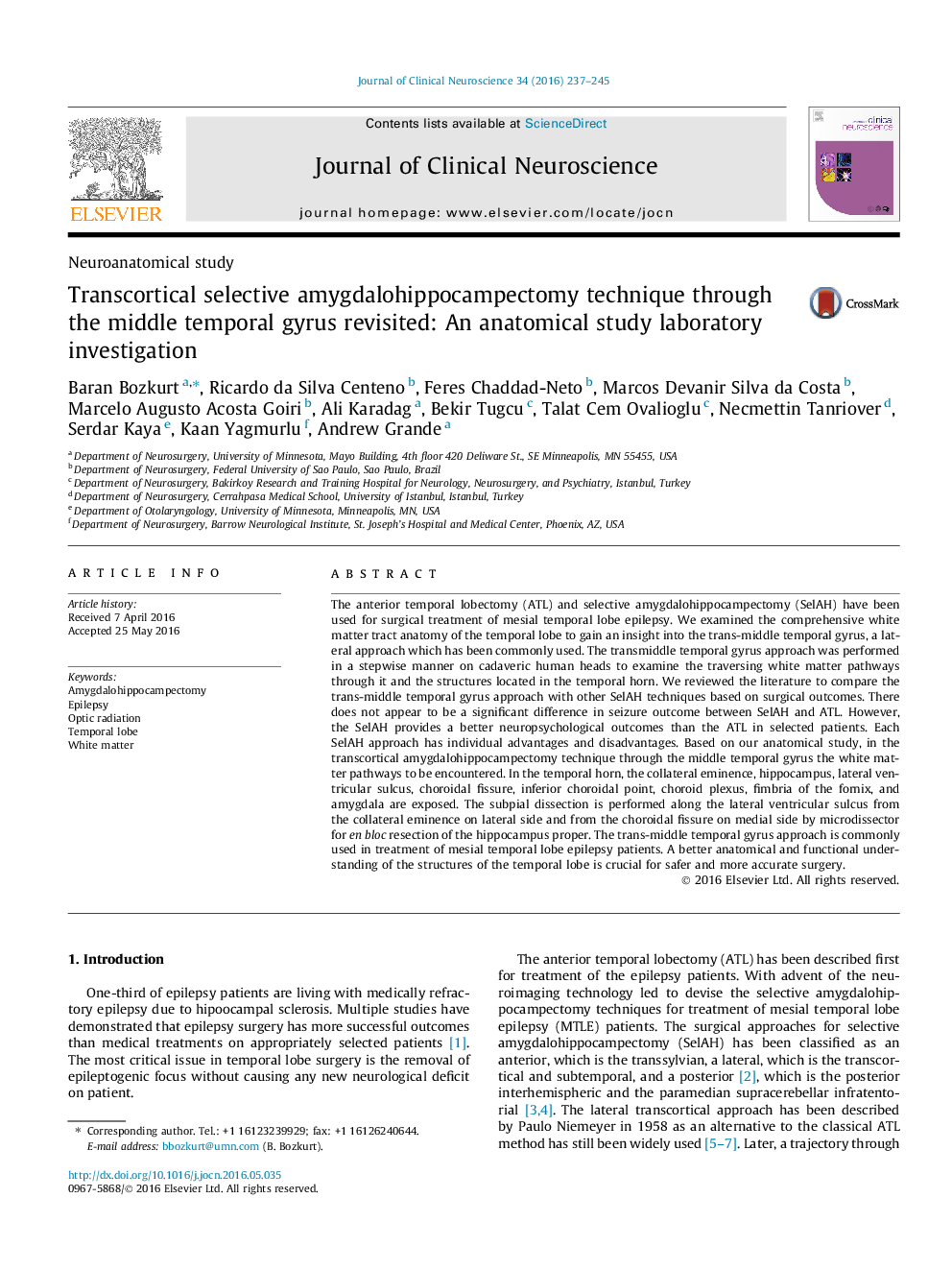| Article ID | Journal | Published Year | Pages | File Type |
|---|---|---|---|---|
| 5629898 | Journal of Clinical Neuroscience | 2016 | 9 Pages |
â¢Performing amygdalohippocampectomy without temporal lobe damage and preserving neurological functions maximally is crucial.â¢Better anatomical knowledge is necessary for surgical procedure of temporal epilepsy.â¢We aimed to combine our clinical experiences and anatomic trick points of transcortical selective amygdalohippocampectomy.
The anterior temporal lobectomy (ATL) and selective amygdalohippocampectomy (SelAH) have been used for surgical treatment of mesial temporal lobe epilepsy. We examined the comprehensive white matter tract anatomy of the temporal lobe to gain an insight into the trans-middle temporal gyrus, a lateral approach which has been commonly used. The transmiddle temporal gyrus approach was performed in a stepwise manner on cadaveric human heads to examine the traversing white matter pathways through it and the structures located in the temporal horn. We reviewed the literature to compare the trans-middle temporal gyrus approach with other SelAH techniques based on surgical outcomes. There does not appear to be a significant difference in seizure outcome between SelAH and ATL. However, the SelAH provides a better neuropsychological outcomes than the ATL in selected patients. Each SelAH approach has individual advantages and disadvantages. Based on our anatomical study, in the transcortical amygdalohippocampectomy technique through the middle temporal gyrus the white matter pathways to be encountered. In the temporal horn, the collateral eminence, hippocampus, lateral ventricular sulcus, choroidal fissure, inferior choroidal point, choroid plexus, fimbria of the fornix, and amygdala are exposed. The subpial dissection is performed along the lateral ventricular sulcus from the collateral eminence on lateral side and from the choroidal fissure on medial side by microdissector for en bloc resection of the hippocampus proper. The trans-middle temporal gyrus approach is commonly used in treatment of mesial temporal lobe epilepsy patients. A better anatomical and functional understanding of the structures of the temporal lobe is crucial for safer and more accurate surgery.
